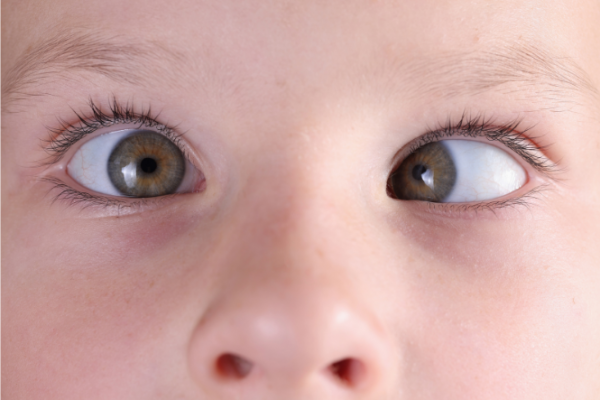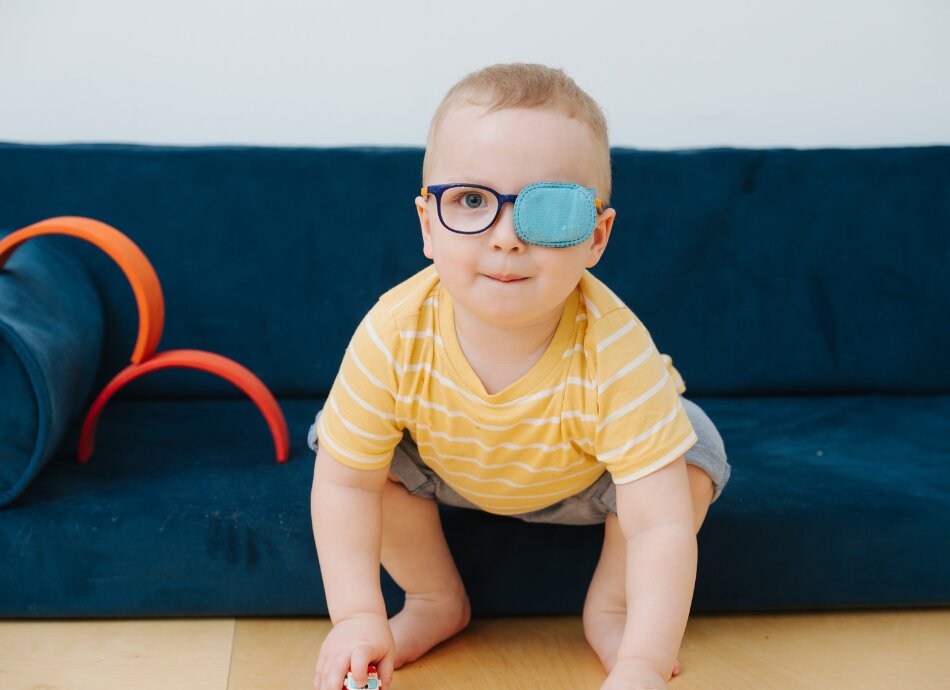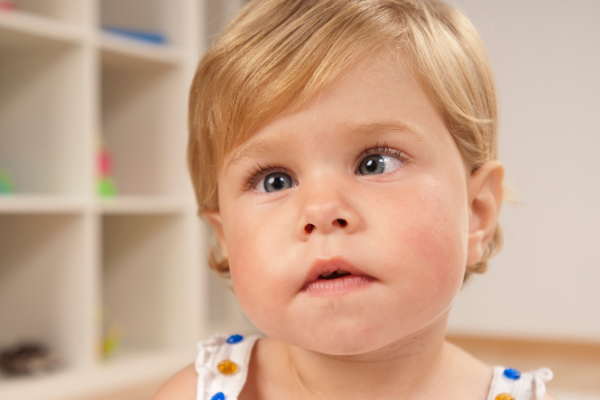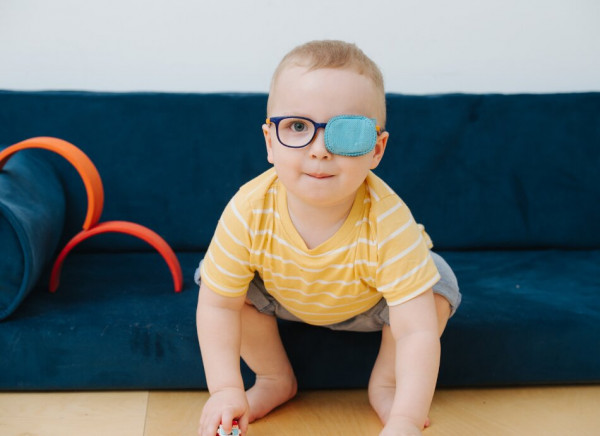A squint (or strabismus) is when the eyes are not looking in the same direction. A squint may be noticeable all the time, or it may come and go.
The eyes of newborn babies may sometimes appear to wander or be turned. But, by around 4 months of age, your baby's eyes should be straight and move together in all directions. Some babies look like they have a squint due to the wide bridge of their nose. As they grow, their features develop and this appearance goes away. But, a child with a true squint will not grow out of it.
Different types of squints
When one eye is straight the other may look in or out as in the picture below.
One eye turning inwards (called esotropia)

Image credit: Canva
One eye may also look up (hypertropia) or down (hypotropia).








